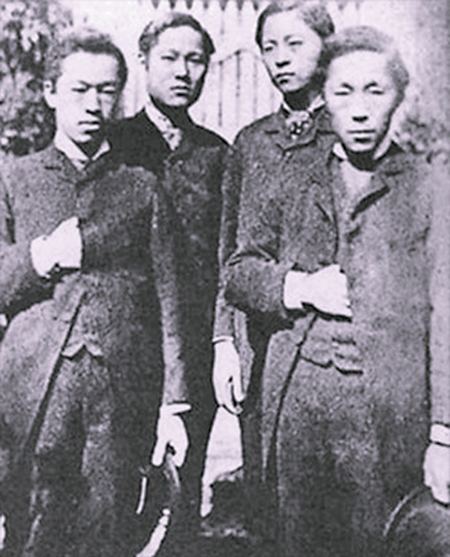Kanji 甲申事変, 甲申革命 Romanization Chōsen jiken Hanja 甲申政變, 甲申革命 | Kanji 朝鮮事件 Hangul 갑신정변, 갑신혁명 | |
 | ||
Romanization Kōshin jihen,Kōshin Kakumai | ||
Gapsin coup
The Gapsin Coup (Korean:갑신정변, 甲申政變), also known as the Gapsin Revolution (갑신혁명, 甲申革命) and Kapsin Incident, was a failed three-day coup d'état which started on 4 December 1884 in the late Joseon dynasty of Korea. The pro-Japanese leaders of the coup were suppressed by a Chinese garrison in Korea, which led to Chinese domination of Korea from 1885–1894. The Korean name for the events takes from the year designator in the traditional sexagenary cycle system of dating, "gapsin" here referring to the year 1884.
Contents
History and background
The Gaehwapa, or Enlightenment Party, group of reformers led by Kim Ok-gyun and Pak Yonghyo sought to initiate rapid changes within Korea to open its borders. They sought to eliminate social distinctions, including eliminating the legal privileges of the yangban class. Thwarted by conservative factions within the Joseon court, particularly the pro-Chinese Sugup'a, they launched a coup d'état attempt with Japanese support on 4 December 1884, seizing the royal palace in Seoul.
Facing this threat, Queen Min secretly requested military intervention from China's Qing dynasty, and after three days the revolt was suppressed by 1500 troops of the Chinese garrison based in Seoul led by General Yuan Shikai. During the ensuing battle, the Japanese legation building was burned down, and forty Japanese were killed. Surviving Gaehwapa activists escaped to the port city of Chemulpo under escort of the Japanese minister to Korea, Takejo, and there boarded a Japanese ship for exile in Japan.
Consequences
The Japanese government demanded an apology and reparations from the Korean government over the incident, which resulted in the Japan–Korea Treaty of 1885 (Treaty of Hanseong), which was signed on 9 January 1885. The treaty restored diplomatic relations, and Korea agreed to pay Japan 110,000 yen and provide a site and buildings for a new legation.
In an effort to defuse tensions over Korea, both Japan and China agreed to withdraw their troops from Korea in the Convention of Tientsin of April 1885. China then appointed Yuan Shikai as Resident in Korea, who directed Korean affairs until 1894.
